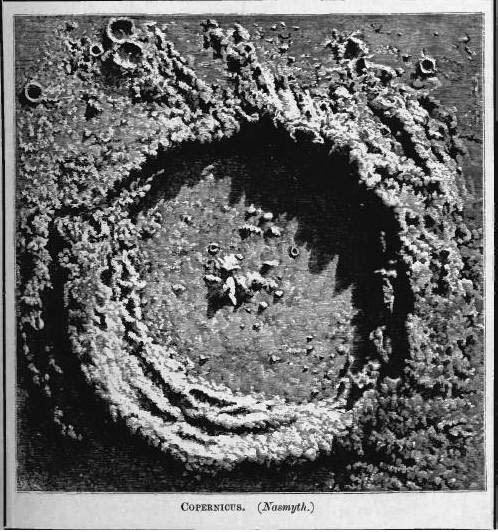The sketch of Copernicus crater shown above was made by James Nasmyth and is from
George F. Chambers’ book, A Handbook of Descriptive and Practical Astronomy,
1889-1890, Oxford, Clarendon, vol.1, figure 65 page 129.
James Nasmyth will always be remembered for his ability to invent, design and
improve on power tools. Born in Edinburgh, Scotland in 1808 to an artist father,
he left school at an early age to build machines, a passion that became his
vocation. His most famous invention was a forerunner to the pile driver known as
the steam hammer. With a life long interest in astronomy he spent the last 30 of
his 81 year lifespan directly involved in astronomy. During this time he built
telescopes and improved their mounts. In addition he charted and drew the moon and
sketched sunspots.
This quote from the above work appears on page 128 and is associated with the
Copernicus crater drawing above. It is most revealing of 19th century thought
about lunar crater origin. “The Volcanic origin of the lunar craters cannot be
more plainly demonstrated than by comparing an engraving such as Fig.62, which
represents a known volcano – Tenerife- with any good engraving of a lunar crater,
e.g. Copernicus, Fig.65. The similarity is too striking to admit of there being
any doubts as to the identity of the physical causes which have originated each
surface.”
Frank McCabe


Wow, a very interesting technique that really brings out the third dimension. Most impressive.
Frank
Thank you for sharing this most interesting sketch by James Nasmyth. I find it intriguing that astronomers of old didn’t even consider the fact that Copernicus was an impact crater, and assumed it was a volcano.
Jason